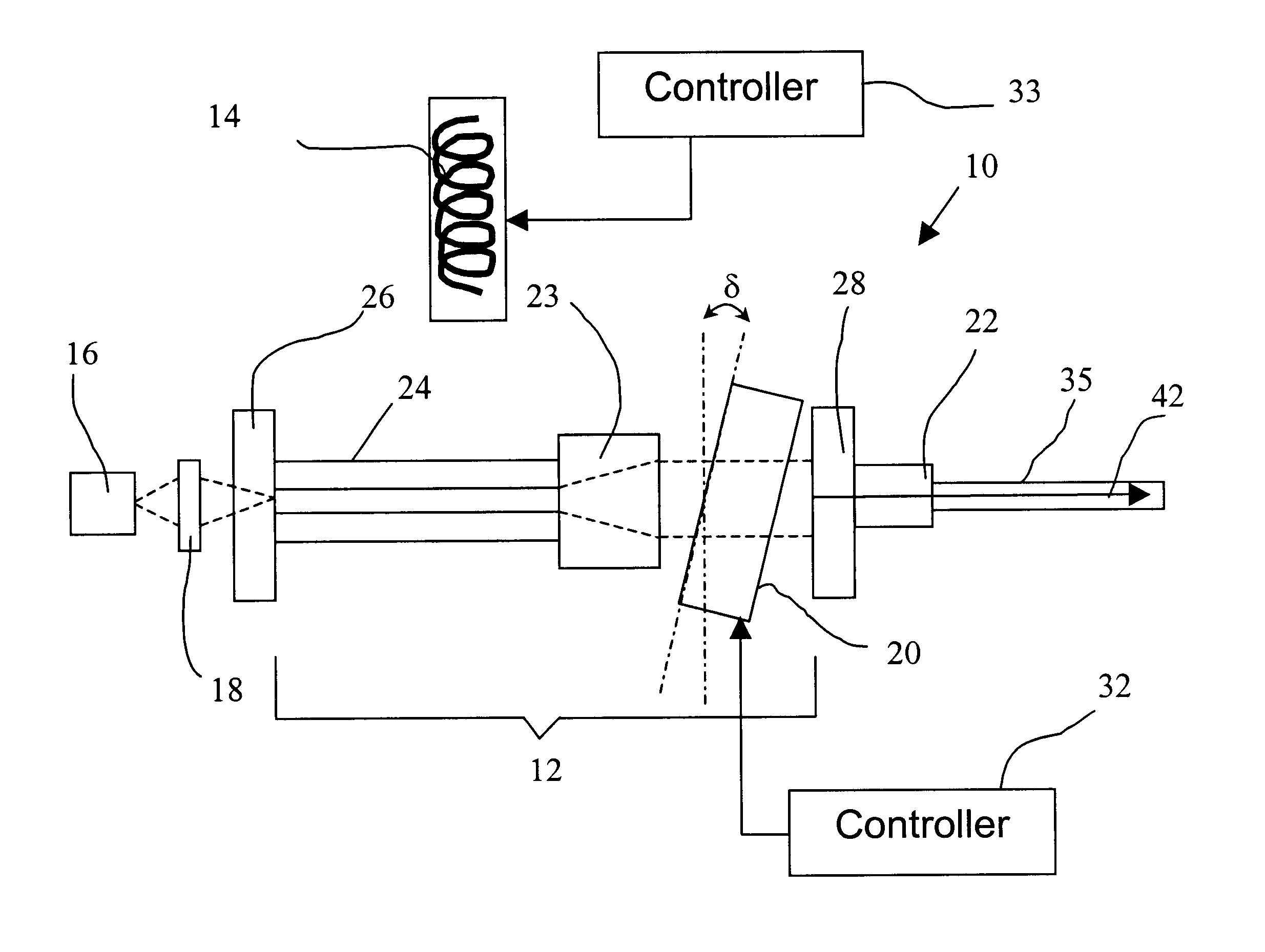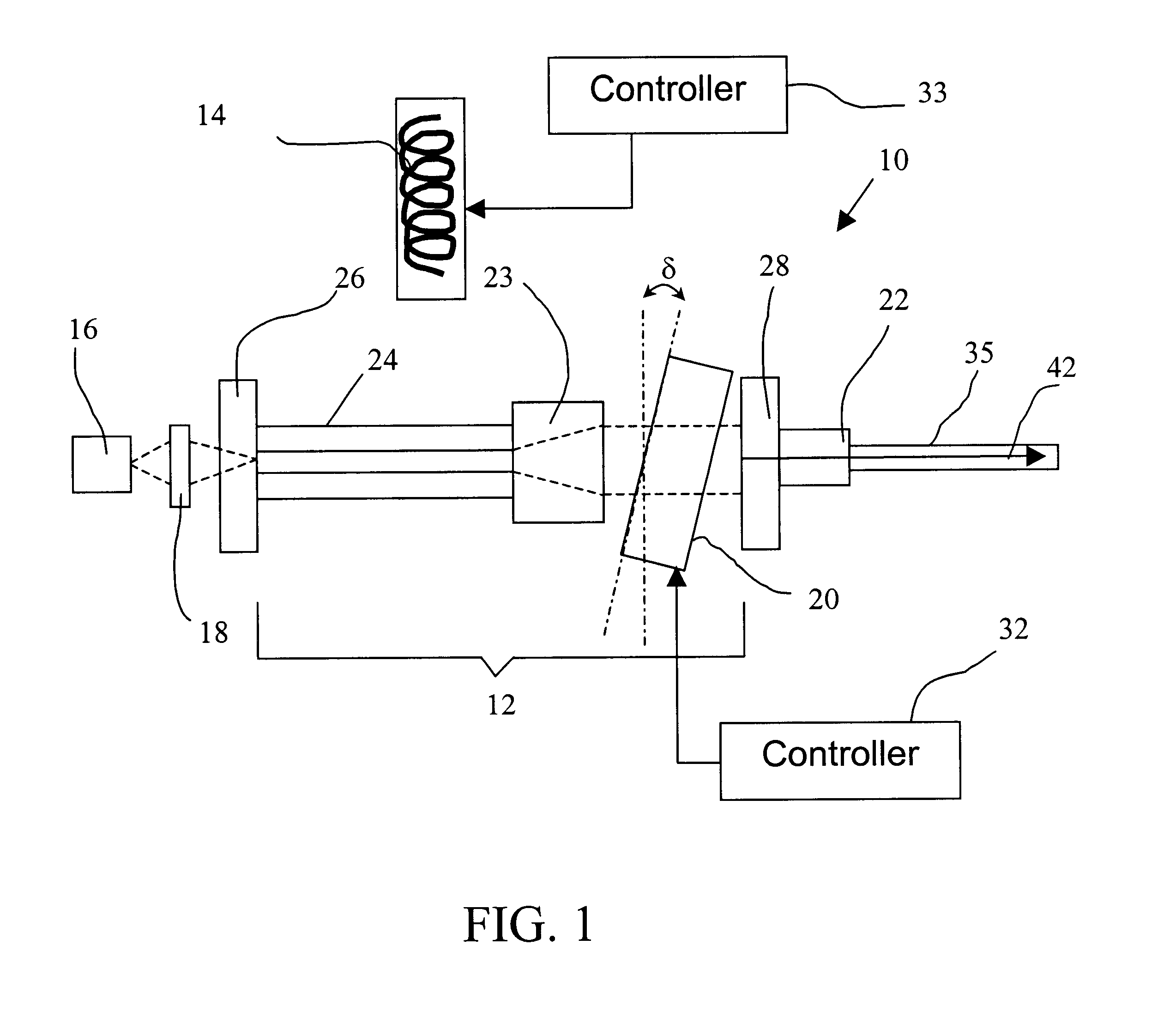Erbium-doped phosphate-glass tunable single-mode fiber laser using a tunable fabry-perot filter
a fiber laser and phosphate glass technology, applied in the field of fiber lasers, can solve the problems of wavelength reproducibility, small output power of such a laser, and practical implementation of these lasers, and achieve the effect of improving mode selectivity and stability
- Summary
- Abstract
- Description
- Claims
- Application Information
AI Technical Summary
Benefits of technology
Problems solved by technology
Method used
Image
Examples
Embodiment Construction
[0031]While the statement of Haber et al. regarding available filters was true in the year 2000, recently new types of tunable filters, namely high finesse (F>2000) fiber Fabry-Perot (Micron Optics) and MEMS-filters (Solus, CoreTek / Nortel) have become available. Still the combination of these high finesse filters with Haber's ring laser would leave on the order of 100 modes under the filter peak and the continued susceptibility to mode-hopping. However, when used in combination with a high gain fiber that allows for short cavity length and correspondingly larger longitudinal mode spacing, these filters can now be use to build stable, mode-hop free fiber lasers that do not require an additional intracavity FFPI or multiwavelength element, therefore reducing the lasing threshold power and increasing the laser output power. The filter must provide a free spectral range (FSR) that exceeds the tuning range, a narrow linewidth at most ten and preferably less than four times the longitudin...
PUM
 Login to View More
Login to View More Abstract
Description
Claims
Application Information
 Login to View More
Login to View More - R&D
- Intellectual Property
- Life Sciences
- Materials
- Tech Scout
- Unparalleled Data Quality
- Higher Quality Content
- 60% Fewer Hallucinations
Browse by: Latest US Patents, China's latest patents, Technical Efficacy Thesaurus, Application Domain, Technology Topic, Popular Technical Reports.
© 2025 PatSnap. All rights reserved.Legal|Privacy policy|Modern Slavery Act Transparency Statement|Sitemap|About US| Contact US: help@patsnap.com



